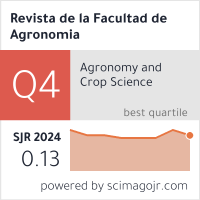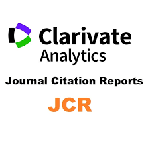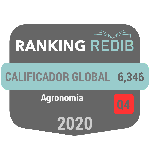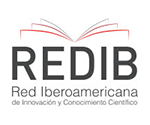Efecto de Saccharomyces cerevisiae y compuestos nitrogenados en la fermentación de la pulpa de banano (Musa spp.)
Resumen
El aprovechamiento de subproductos agroindustriales, como la pulpa de banano (Musa spp.), representa una alternativa sostenible para la producción animal, reduciendo costos y mejorando el uso de recursos. El estudio tuvo como objetivo evaluar el efecto de Saccharomyces cerevisiae, urea y sulfato de amonio sobre el valor nutricional de la pulpa de banano, buscando optimizar sus propiedades bromatológicas para convertirla en un insumo nutricionalmente viable y sostenible. Se empleó un diseño experimental completamente aleatorizado con un esquema factorial, considerando dos niveles de tratamiento: 1 % de Saccharomyces cerevisiae, 0.8 % de urea y 0.1 % de sulfato de amonio, y 1.5 % de Saccharomyces cerevisiae, 1 % de urea y 0.2 % de sulfato de amonio. Los tiempos de fermentación aeróbica estudiados fueron 2, 4 y 6 horas. Los resultados mostraron que la mejor calidad bromatológica se alcanzó a las 6 horas con 1 % de Saccharomyces cerevisiae, 0.8 % de urea y 0.1 % de sulfato de amonio. No obstante, el tratamiento más eficiente económicamente fue con 1.5 % de Saccharomyces cerevisiae, 1 % de urea y 0.2 % de sulfato de amonio en 4 horas de fermentación, debido a su menor consumo energético. Estos hallazgos destacan el potencial de la pulpa de banano tratada como un insumo rentable y sostenible, contribuyendo a sistemas de producción animal más eficientes.
Descargas
Citas
Briz, N., Eva, J., Rial, R., & Simal, J. (2016). Proteome changes in Garnacha Tintorera red grapes during post-harvest drying. Lwt-Food Science and Technology, 69, 608-613. https://doi.org/10.1016/j.lwt.2016.02.026
Fernandez, R., Contreras, J., Curasma, J., Cordero, A., Rojas, Y., Ruiz, D., & Huaman, R. (2021). Effect of Saccharomyces cerevisiae and fermentation times on the chemical composition of oat and barley silage. Revista de Investigaciones Veterinarias del Perú, 32(6), 1-8. http://dx.doi.org/10.15381/rivep.v32i6.21681
Gu, Y., Cai, F., Zhu, Z., Dai, Z., Chen, C., & Liu, G. (2020). Improving the methane production from zucchini stem by response surface methodology and different pretreatments. Industrial Crops and Products, 150, 112402. https://doi.org/10.1016/j.indcrop.2020.112402
Kong, J., Zhang, Y., & Ju, J. (2019). Antifungal effects of thymol and salicylic acid on cell membrane and mitochondria of Rhizopus stolonifer and their application in postharvest preservation of tomatoes. Food Chemistry, 285, 380-388. https://doi.org/10.1016/j.foodchem.2019.01.099
Mohd, H., Roslan, J., Saallah, S., Munsu, E., Shaeera, N., & Pindi, W. (2022). Banana peels as a bioactive ingredient and its potential application in the food industry. Journal of Functional Foods, 92(105054), 1-12. https://doi.org/10.1016/j.jff.2022.105054
Mutsokoti, L., Panozzo, A., & Tongonya, J. (2017). Carotenoid stability and lipid oxidation during storage of low-fat carrot and tomato based systems. Lwt-Food Science and Technology, 2017, 470-478. https://doi.org/10.1016/j.lwt.2017.03.021
Poel, V., Abdollahi, J., Cheng, H., Colovic, R., Hartog, L., Miladinovic, D., Página, G., Sijssens, K., Smillie, J., Thomas, U., Wang, W., & Hendriks, W. (2020). Future directions of animal feed technology research to meet the challenges of a changing world. Animal Feed Science and Technology, 270(114692), 1-12. https://doi.org/10.1016/j.anifeedsci.2020.114692
Rigueira, J. P. S., De Jesus, N. G., Júnior, V. R. R., Monção, F. P., Costa, N. M., David, G. S. S., Vieira E Silva, F., & Da Cunha Siqueira Carvalho, C. (2021). Effects of different banana crop wastes on nutrient intake and digestibility, microbial protein synthesis, feeding behavior, and animal performance of ¾ Holstein × Zebu heifers in a semiarid rangeland. Tropical Animal Health and Production, 53(2), 209. https://doi.org/10.1007/s11250-021-02660-z
Salazar, N., Barco, G., Zuñiga, S., Domínguez, A., Robles, M., Villegas, M., & González, G. (2022). Single-Cell Protein production as a strategy to reincorporate food waste and agro by-products back into the processing chain. Bioengineering, 9(11), 1-13. https://doi.org/10.3390/bioengineering9110623
Simeanu, D., & Razvan, R. (2023). Animal Nutrition and Productions. Agriculture, 13(943), 1-10. https://doi.org/10.3390/agriculture13050943
Souza, C.P.L., Pereira, A.d.S., Aguieiras, É.C.G., & Amaral, P.F.F. (2025). Sequential Solid-State and Submerged Fermentation to Increase Yarrowia lipolytica Lipase Production from Palm Oil Production Chain By-Products. Fermentation, 11(3), 1-16. https://doi.org/10.3390/fermentation11010003
Suárez, C., Garrido, N., & Guevara, C. (2016). Levadura Saccharommyces cerevisiae y la producción de alcohol. Revisión bibliográfica. ICIDCA. Sobre los Derivados de la Caña de Azúcar, 50(1), 20-28.
Vásquez, L., Alvarado, K., Intriago, F., Raju, N., & Prasad, R. (2024). Banana and apple extracts with efficient microorganisms and their effect on cadmium reduction in cocoa beans (Theobroma cacao L.). Discover Food, 4(163), 1-13. https://doi.org/10.1007/s44187-024-00205-5
Vásquez, L., Vera, J., Erazo, C., & Intriago, F. (2022). Induction of rhizobium japonicum in the fermentative mass of two varieties of cacao (Theobroma Cacao L.) as a strategy for the decrease of cadmium. International Journal od Health Sciences, 6(3), 11354-11371. https://doi.org/10.53730/ijhs.v6nS3.8672 Induction
Vera Chang, J., Frank Intriago F., Vásquez Cortez, L., & Alvarado Vásquez, K. (2022). Inducción anaérobica de Bradyrhizobium japonicum en la postcosecha de híbridos experimentales de cacao y su mejoramiento en la calidad fermentativa. Journal of Science and Research, 7(2), 19–23. https://doi.org/10.5281/zenodo.7723254
Yang, X., Yang, Y., Huang, J., Man, D., & Guo, M. (2021). Comparisons of urea or ammonium on growth and fermentative metabolism of Saccharomyces cerevisiae in ethanol fermentation. World Journal of Microbiology and Biotechnology, 37(6), 98. https://doi.org/10.1007/s11274-021-03056-9
Derechos de autor 2025 Juan Carlos Medina Fonseca, Juan Carlos Gómez Villalva, Luis Humberto Vásquez Cortez, Edwin Amado Mendoza Hidalgo, Álvaro Martín Pazmiño Pérez, Jhoan Alfredo Plua Montiel

Esta obra está bajo licencia internacional Creative Commons Reconocimiento-NoComercial-CompartirIgual 4.0.



















